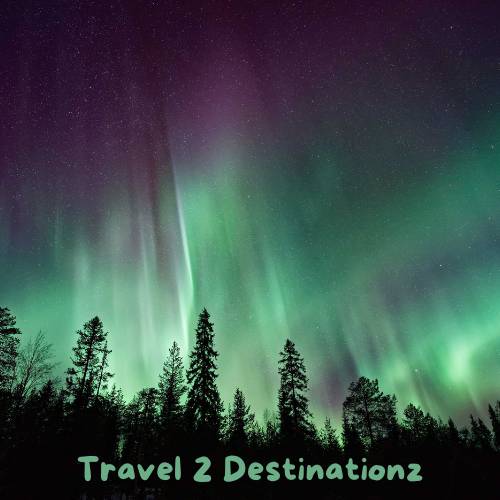Spectacular Aurora Borealis in California in July 2024
Behold in anticipation as we embark on a voyage to witness one of nature’s most captivating displays of the spectacular Aurora Borealis in California in July 2024. Despite prevailing misconceptions, journeying to the Arctic Circle isn’t requisite for catching a glimpse of this awe-inspiring marvel. In July 2024, California offers a singular opportunity to behold the Northern Lights in their resplendent grandeur.
The aurora borealis, also known as the northern lights, is visible above Lake Berryessa early Saturday after a rare, severe solar storm reached Earth on May 10 2024 Friday afternoon.

Prime Viewing Locations in California
Though the Aurora Borealis is commonly linked with polar regions, California boasts numerous top-notch spots for observation thanks to its geographic location and limited light pollution.
To maximize your viewing experience, venture to remote locales far from urban illumination, such as Lassen Volcanic National Park, Mount Shasta, or Lake Tahoe. These sites offer clear vistas of the nocturnal heavens, amplifying the likelihood of beholding the Aurora Borealis in its full magnificence.
The Science Behind the Aurora Borealis
Before delving into the particulars of witnessing the Aurora Borealis in California in July 2024, let’s grasp the scientific principles underpinning this enthralling exhibition. This phenomenon ensues when charged particles from the sun intersect with the Earth’s atmosphere, engendering a magnificent palette of hues that frolic across the nocturnal expanse.
Primarily witnessed in regions of elevated latitudes proximate to the Arctic and Antarctic circles, these natural luminous displays occasionally extend southward during phases of heightened solar activity, granting fortuitous onlookers in California a glimpse of an uncommon celestial marvel.
Capturing The Aurora Borealis in California in July 2024

For the lovers of photography, seizing the Aurora Borealis in California in July 2024 presents a chance of a lifetime. To guarantee striking snapshots, arm yourself with a DSLR camera featuring manual adjustments, a robust tripod for stabilizing your captures, and a wide-angle lens for encompassing the vast nocturnal expanse.
Delve into varying exposure durations to immortalize the vivid hues and elaborate designs of the auroras. Moreover, contemplate utilizing a remote shutter release to mitigate camera tremors and attain crisper images.
Planning Your Aurora Borealis Adventure
To optimize your encounter with the Aurora Borealis in California in July 2024, strategize your expedition with precision. Conduct thorough research on optimal observation sites and lodging choices beforehand, taking into account accessibility, proximity to areas with minimal light pollution, and available amenities.
Prepare accordingly by packing snug attire and essentials like provisions, hydration, and a torch for nocturnal ventures. Above all, maintain adaptability with your itinerary, as the auroras’ emergence is capricious, often necessitating nocturnal escapades for prime viewing opportunities.
Best Places to See Aurora Borealis in 2024
You’re in luck! A remarkably intense Aurora Borealis was observed on July 10, 2024, stretching as far south as Florida! This implies that individuals situated anywhere in Europe or North America under clear skies stood a chance of beholding this extraordinary spectacle.
Nevertheless, for forthcoming guidance, here are some premier locations to witness the Northern Lights in 2024:
Iceland
Renowned for its secluded setting and extended periods of darkness throughout the winter season, Iceland emerges as a favored destination for Aurora Borealis enthusiasts. The Westfjords, in particular, boast some of Europe’s most obscure skies, rendering them a premier locale for observing the luminous displays.
Canada
The northern reaches of Canada, notably the Yukon Territory and Nunavut, stand out as additional excellent venues for witnessing the Aurora Borealis. Urban centers such as Yellowknife and Whitehorse draw in tourists keen on aurora observation, boasting favorable odds of encountering the lights amidst pristine skies and abundant amenities.
Alaska
Alaska emerges as yet another premier destination for experiencing the Aurora Borealis. The extended winter nights and unclouded skies in Fairbanks and Anchorage render them sought-after hubs for aurora enthusiasts.
Norway
Northern Norway, especially Tromsø, stands as a sought-after destination for observing the Aurora Borealis. Situated above the Arctic Circle, the city experiences prolonged periods of darkness throughout the winter season. Additionally, numerous companies provide Aurora Borealis tours, facilitating visits to regions with even lower light pollution for enhanced viewing experiences.
Finland
Finnish Lapland presents another exceptional locale for witnessing the Aurora Borealis. The area hosts various resorts and lodges providing packages tailored for aurora observation. Moreover, numerous tours and activities cater specifically to aurora hunters, enriching the experience for visitors seeking to catch a glimpse of the celestial phenomenon.
Tips for Seeing the Aurora Borealis
- Plan your travels during the equinoxes in March and September, or the winter months spanning from December to February. These periods coincide with the longest nights of the year and peak activity of the Aurora Borealis.
- Escape the glow of city lights, as light pollution can obscure the view of the Aurora Borealis. Seek out locations with minimal illumination, such as national parks or remote areas, to optimize your chances of witnessing the spectacle.
- Exercise patience when seeking the Aurora Borealis, as it is a natural occurrence with no certainties of visibility. Yet, by positioning yourself in the appropriate location at the opportune moment, you might just be fortunate enough to behold this remarkable spectacle.
Conclusion
In July 2024, California beckons you to behold the breathtaking splendor of the Aurora Borealis in California in July 2024, a natural wonder that defies geographical confines. From the untamed terrain of Lassen Volcanic National Park to the tranquil shores of Lake Tahoe, brace yourself for a mesmerizing encounter with nature’s celestial artwork. With meticulous preparation, endurance, and a sprinkle of serendipity, you just might find yourself spellbound by the ethereal radiance of the Northern Lights gracefully pirouetting across the nocturnal canvas.
Do solar storms cause northern lights?
Increased solar activity initiates the spectacle of auroras, a celestial ballet adorning Earth’s polar regions, renowned as the northern lights (aurora borealis) and southern lights (aurora australis). Upon encountering Earth’s magnetic domain, the charged particles engage with atmospheric gases, orchestrating a luminous display that graces the heavens with a myriad of hues.
What happens due to solar storms?
These tempests wield influence over an array of technologies, comprising satellite communications, power grids, and GPS navigation systems. Furthermore, they present potential hazards to astronauts and airline travelers owing to heightened radiation exposure.
Why could we see the northern lights?
The phenomenon is instigated by geomagnetic disturbances originating from a cluster of sunspots on the sun. The disturbance was remarkably potent, categorized as an “extreme” (or G5) storm, the apex level, as announced by the Space Weather Prediction Center on Friday evening.
What time can I see the northern lights in California?
Residents of California have noted that the Aurora Borealis in California in July 2024 on their mobile devices enhances the visibility of the northern lights. The optimal viewing window typically falls between 10 p.m. and 3 a.m., offering spectators the best opportunity to witness this celestial spectacle in all its glory.
Is it possible to see the northern lights in July?
The Aurora Borealis in California in July 2024 can potentially be observed under dark skies from late August to mid-April, ideally under a clear, cloudless sky. Although they occur throughout the year, their visibility is diminished during the months of July to July and much of August due to the prolonged daylight, rendering sightings improbable.
Explore More About CA
- Dinner Cruise Lake Tahoe | Unforgettable Dinning Experience
- Discover the Finest Restaurants in Midtown Sacramento
- Best San Diego Waterfalls You Must See
- Explore Best Southern California Camping for Families
- Fields of Flowers in California | A Visual Delight
- 100 Best Things to Do in Tahoe in Summer & Must-See Stops
- Best Things to Do at Half Moon Bay CA, Top Hotels & Resorts
- Enjoy Best Lantern Festival Los Angeles | Explore Vibrant CA
- 3 Best Babymoon in California Destinations For Couples
- Affordable Day Trip to Santa Barbara to Enjoy, Shop & Eat
- Remarkable California Hot Springs Resorts | A Guide to Peace
- Serene Day Trips From Palm Springs | Reveal Hidden Gems
- Top 10 Active Volcanoes in California | Revealing Mysteries
- Explore Big Pine Lakes – Pristine Lakes & Epic Backpacking
- Thrilling Whale Watching in San Diego – Explore Marine World
- Best San Diego Waterfalls You Must See
- Discover What to do in Santa Cruz: Explore, Play, and Enjoy!
- Fields of Flowers in California | A Visual Delight
